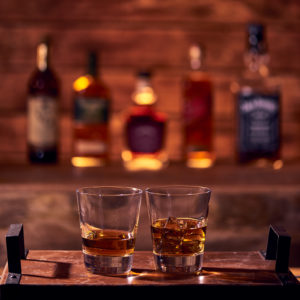Smartphones have made it possible nowadays for practically anyone to snap a photo. But there is a big difference between snapping a smartphone photo and commercial photography. So, what is commercial photography and why is it different?

Commercial photography is the practice of making a photo, not taking a photo, with the intent to directly or indirectly influence a purchasing decision. An example of a direct-influence commercial photo might be a product photo you see on Amazon.com. Meanwhile, an example of an indirect-influence commercial photo might be one you see on a billboard to eat more apples.
Because the intent behind commercial photography is to influence purchasing decisions, the benchmark for using quality photos is very high – too high for smartphones to be able to fulfill. There are some voices trying to push smartphones as capable of producing commercial-grade photography and videography. However, anyone that settles for smartphone quality will be leaving the door wide open for competition to easily reposition their brand as inferior quality.
There are many practice areas within commercial photography. This might include architectural to headshot photographers, and even portrait photographers. Three well-used areas include fashion photography, lifestyle photography and product photography.
Fashion Photography
Fashion photography can be very high-end, particularly with so many luxury brands competing in the space. The use of photography in the fashion industry spans many mediums and branches into other practice areas, such as lifestyle and product photography.
Fashion brands employ lots of photography in advertising. This is often done by using lifestyle or editorial-style photos. But fashion brands sell online as much as anyone else. Thus, product photography is also used for eCommerce listings.
Fashion photography has a rich history. Some credit it with beginning as far back as the 1850s. It is filled with some of the commercial photography industry’s most popular photographers.
Lifestyle Photography
This photography practice area also crosses over into others. Lifestyle photography is often used in conjunction with basic product photography for complementary purposes. The main goal with this photography is often to depict the product how it might be used in real life.
So, a lifestyle photograph might be created to depict and link comfort, style or some other attribute with a brand. In this way, a typical photo might have a model illustrating in a real-life setting or using a method to show how comfortable or stylish a product is.
In addition to attempting to convey product attributes, it might also attempt to tell a story. For example, a company might sell an energy drink where they want to convey how much more productive it can make you. In this instance, you might use a photo of a model riding up an escalator in a business suit, drink in hand and a smile on the face. Such a photo can imply how energetic it makes her at the start of her day while riding up the escalator can imply how she’s climbing the corporate ladder of success.
Product Photography
Thanks in part to Amazon, product photography is often thought of as very basic and shot against a white background. But the devil is in the details and having high-quality product photos has been proven over and over that it significantly impacts online sales conversions. In fact, nine out of 10 online shoppers say that photo quality is the most important factor.
But product photography is much more than just shots on a white background. There are product photo shoots that push creative and technical boundaries. They can take full days or longer to produce.
Commercial photography is critical in the business world. If there is money to be made in a capitalistic country, commercial photography is a key weapon in competitive markets. It is the difference between making a photo and just taking one, the difference between making a sale or half-baking your business.
